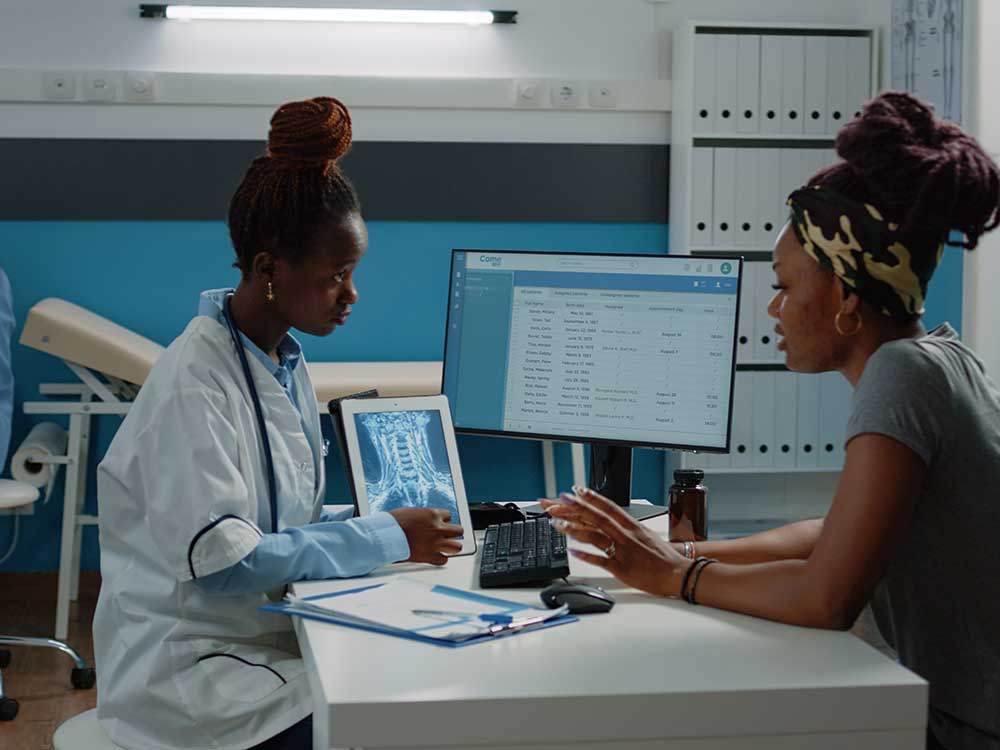Leading Skills Required to Excel in Medical Administration Duty Today
Leading Skills Required to Excel in Medical Administration Duty Today
Blog Article
Best Practices in Medical Administration for Improving Effectiveness and Minimizing Costs
In the ever-evolving landscape of medical care, the pursuit of ideal techniques in clinical administration is critical for improving effectiveness and suppressing expenditures. By incorporating advanced technologies such as digital health documents and telemedicine, medical care companies can improve procedures and improve person treatment.
Leveraging Advanced Technology
The combination of digital solutions right into health care systems has transformed the means centers operate, improving processes and enhancing individual treatment. By systematizing patient information, EHRs eliminate the demand for difficult documentation and help with smooth interaction among medical care service providers.
Telemedicine is one more technical advancement that has actually changed individual interaction. It uses benefit for both patients and medical care experts by making it possible for remote consultations, which can reduce the requirement for in-person sees and maximize appointment scheduling. Furthermore, telehealth systems can prolong healthcare access to country or underserved areas, bridging gaps in care delivery.
Furthermore, the use of Expert system (AI) and artificial intelligence is becoming increasingly widespread in anticipating analytics, permitting very early detection of possible wellness problems and even more informed decision-making. These technologies, when integrated successfully, can boost analysis accuracy and individualize client treatment strategies, ultimately resulting in enhanced health care end results and operational effectiveness.
Optimizing Resource Allowance
Effective source allocation is vital for making the most of the performance of medical management. By purposefully managing sources such as personnel, equipment, and finances, health care centers can considerably boost their functional performance, improve patient results, and reduce unnecessary expenses. The first step in optimizing resource appropriation includes conducting a comprehensive analysis of existing possessions and recognizing locations where resources might be underutilized or overextended. This evaluation must be data-driven, utilizing metrics and analytics to inform decision-making procedures.
Focusing on resource allowance based on client requirements and solution needs is important. Carrying out adaptable staffing designs can likewise enhance labor resources by adjusting workers allowance in feedback to varying client quantities.
Funds should be diligently kept an eye on and designated with strategic insight to support both short-term functional requirements and long-term institutional goals. This includes investing in training programs that boost team expertises and embracing energy-efficient methods that minimize operational expenses (medical administration). Inevitably, an enhanced resource appropriation strategy fosters a lasting medical care environment that is responsive, reliable, and monetarily sensible
Streamlining Workflow Procedures
When medical care facilities goal to enhance functional effectiveness, simplifying process processes becomes a critical emphasis. Effective workflows lessen redundancy, eliminate unneeded steps, and improve sychronisation amongst healthcare experts. This strategy not only increases solution delivery however likewise boosts the top quality of person care.

Next, modern technology assimilation plays a significant function in enhancing process. Carrying out electronic wellness documents (EHRs) and digital physician order entry (CPOE) systems minimizes documentation, minimizes human mistake, and makes sure details comes to all pertinent personnel. Additionally, leveraging telemedicine systems can enhance patient assessments and follow-ups, decreasing the pressure on physical facilities.

Eventually, structured process cause set you back decreases and boosted person satisfaction, fostering a much more sustainable health care environment.
Enhancing Information Management
Structure upon structured operations, enhancing data administration comes to be an important element beforehand healthcare management. Effective information administration systems are critical for keeping exact individual documents, enhancing decision-making, and guaranteeing conformity with regulatory requirements. By carrying out durable data monitoring solutions, healthcare facilities can enhance the top quality of client care while simultaneously decreasing functional costs.
One key element of improving data management is the integration of advanced electronic health record (EHR) systems. These systems assist in the seamless exchange of person info across various divisions, decreasing duplication of examinations and decreasing mistakes. A well-designed EHR system sustains data analytics, enabling medical care service providers to determine fads and make notified decisions relating to person treatment.
Additionally, guarding person data is critical. Embracing extensive cybersecurity actions, including encryption and regular audits, makes sure the integrity and discretion of delicate information. This not only shields people but likewise maintains the organization's credibility.
Purchasing personnel training is one more essential aspect. Educating healthcare professionals on data administration methods improves their capacity to successfully utilize technology, bring about boosted individual end results. Finally, enhancing data monitoring through sophisticated technology and thorough training is necessary for achieving efficiency and cost decrease in medical administration.
Fostering Collaborative Interaction
A vital element beforehand medical administration is promoting collaborative interaction amongst health care experts. Reliable communication useful site is vital for making certain smooth client care, maximizing treatment end results, and decreasing errors. By encouraging open discussion and control throughout multidisciplinary teams, healthcare organizations can improve their functional effectiveness and reduce unnecessary prices.
Central to this method is the assimilation of communication technologies such as electronic wellness documents (EHRs) and protected messaging platforms, which promote the rapid exchange of critical individual information. These devices make it possible for doctor to access and share information in real time, making certain that all team members are informed and aligned in their decision-making procedures. Additionally, routine group meetings and interdisciplinary rounds can additionally advertise a culture of cooperation and responsibility.
Educating programs concentrated on enhancing interaction skills are additionally important. These programs can aid team develop the ability to convey details clearly and listen actively, therefore lowering misconceptions and cultivating a helpful workplace. Additionally, adopting standardized interaction procedures, such as SBAR (Scenario, Background, Analysis, Recommendation), can streamline the exchange of details, making certain that essential details are communicated succinctly and properly. Ultimately, fostering collective communication brings about improved sites healthcare distribution and cost financial savings (medical administration).

Final Thought
Integrating advanced innovation, such as digital health and wellness records and telemedicine, along with optimized source allocation and streamlined process processes, is important for improving performance in medical management. Effective information management and promoting collaborative interaction amongst healthcare teams are crucial for decreasing redundancies and improving care quality. By prioritizing preventative treatment and participating in high quality improvement initiatives, healthcare organizations can accomplish considerable cost financial savings and enhanced individual outcomes, consequently making certain lasting medical care distribution in a progressively intricate setting.
Report this page